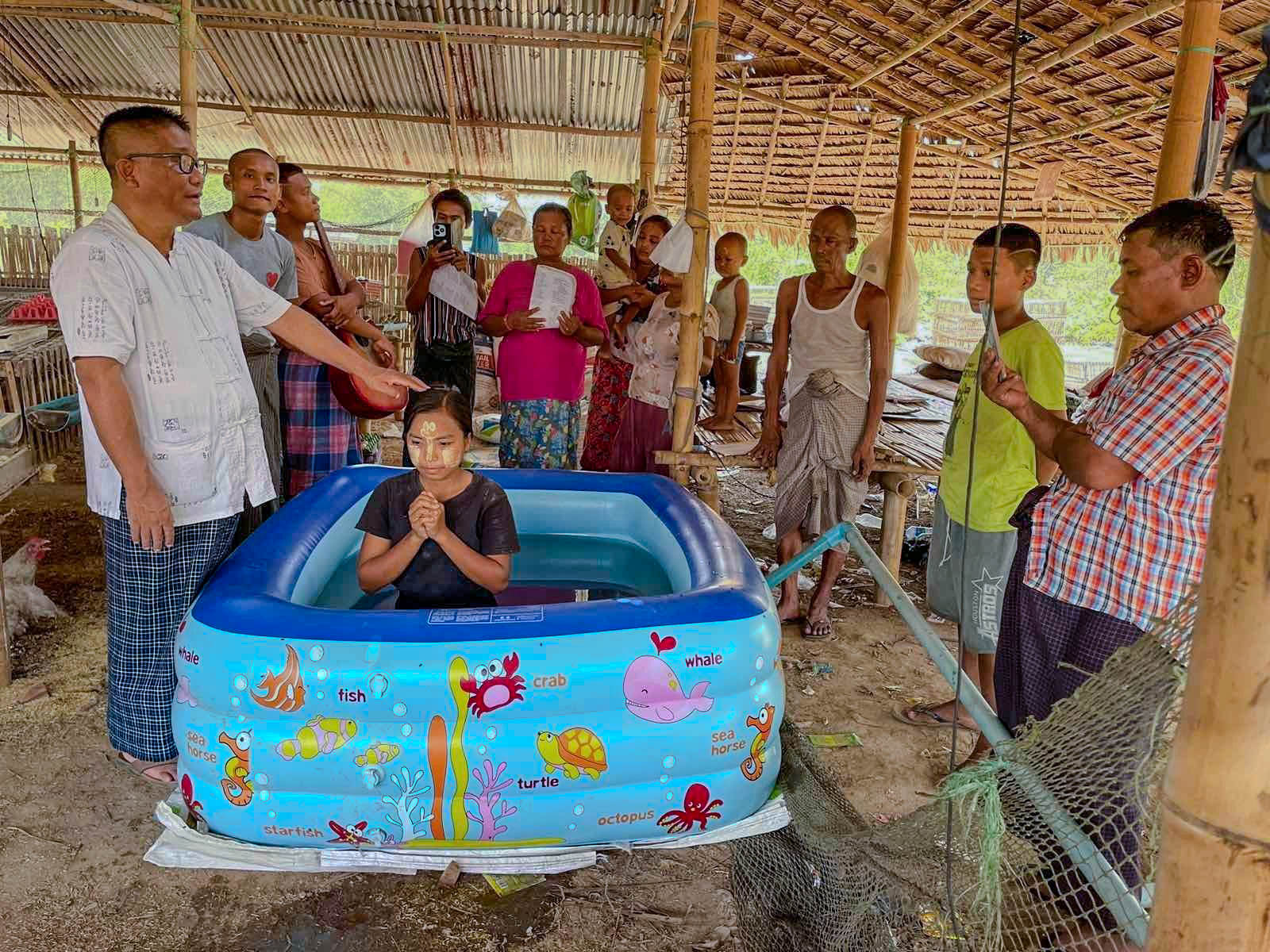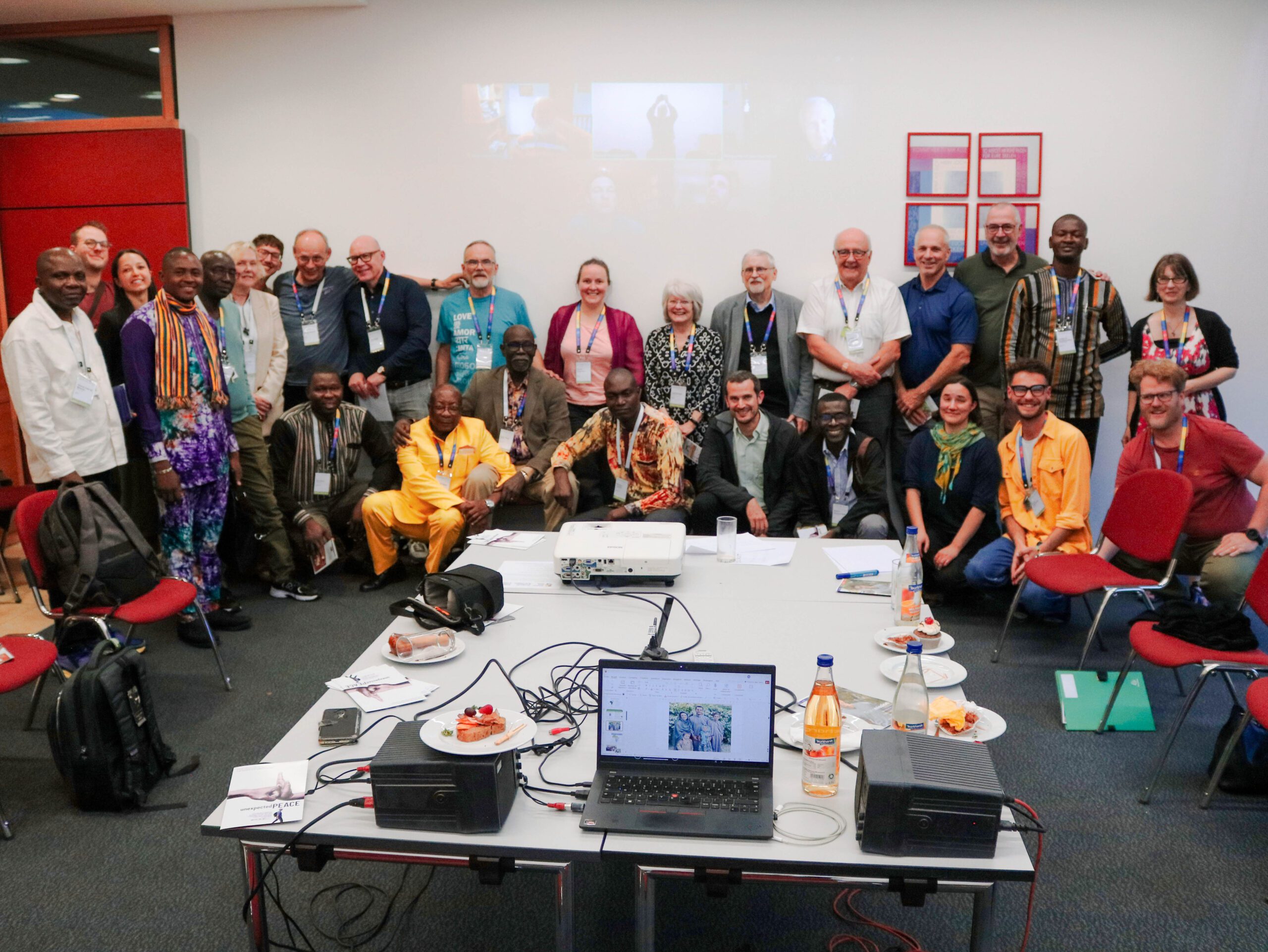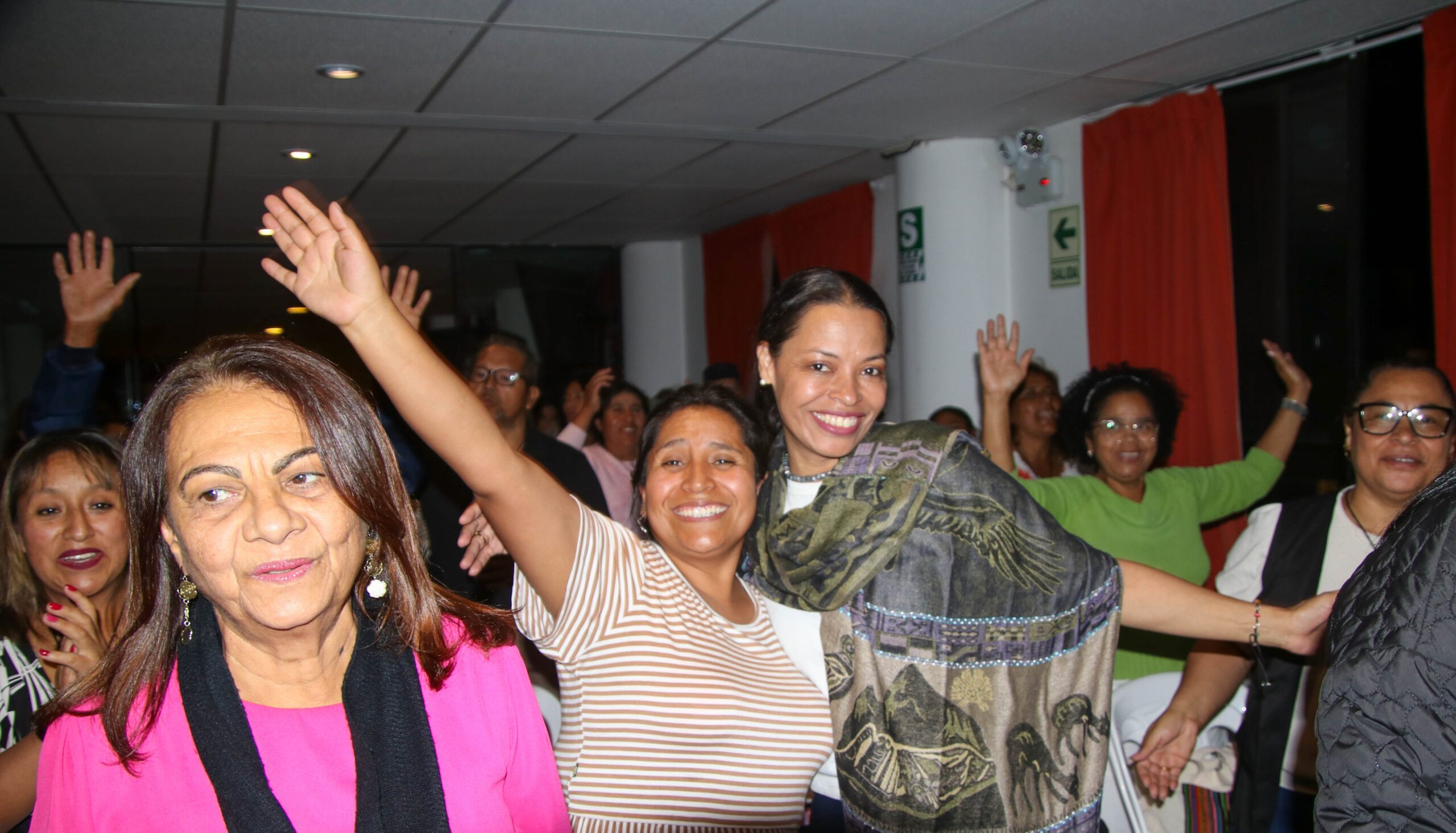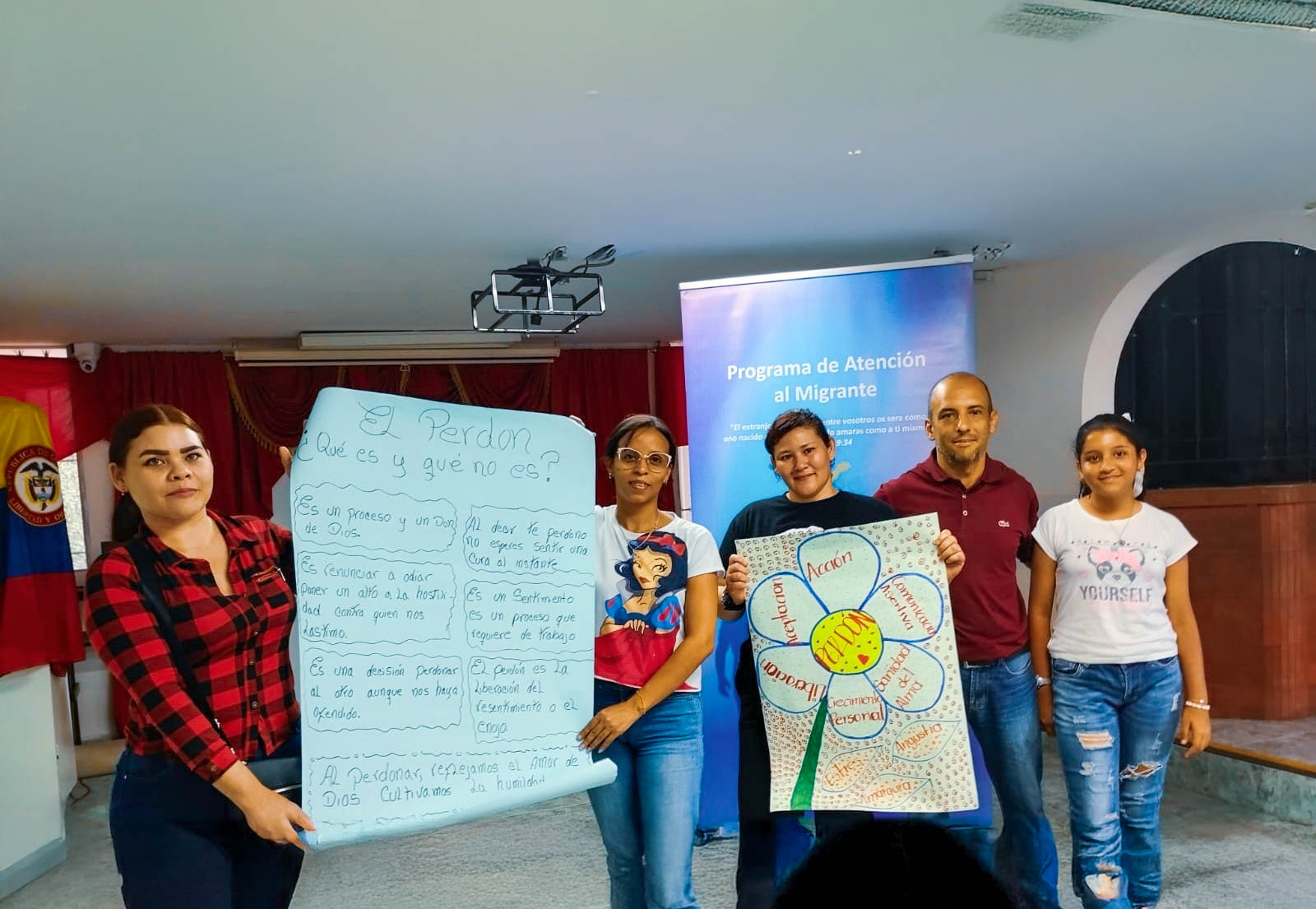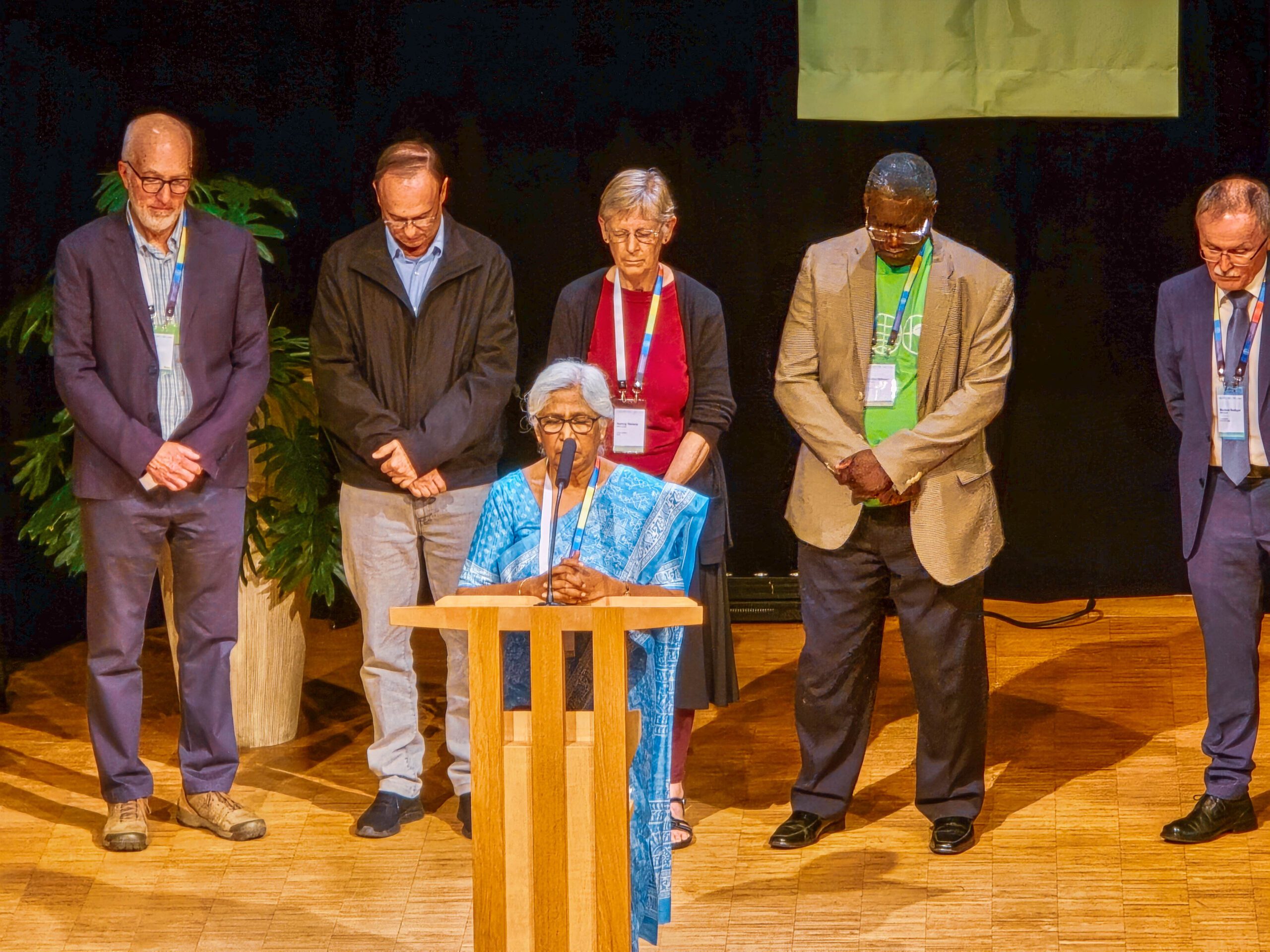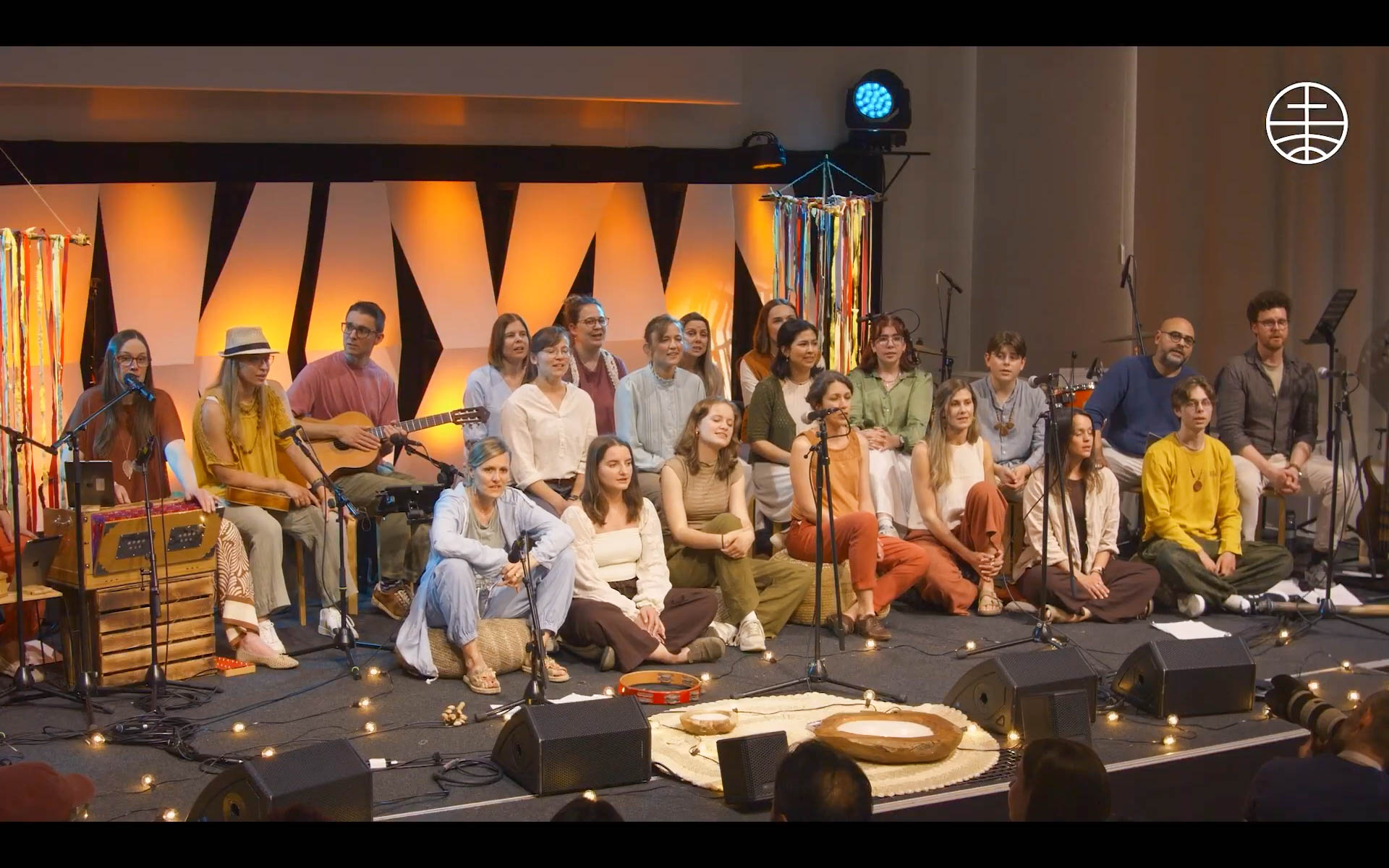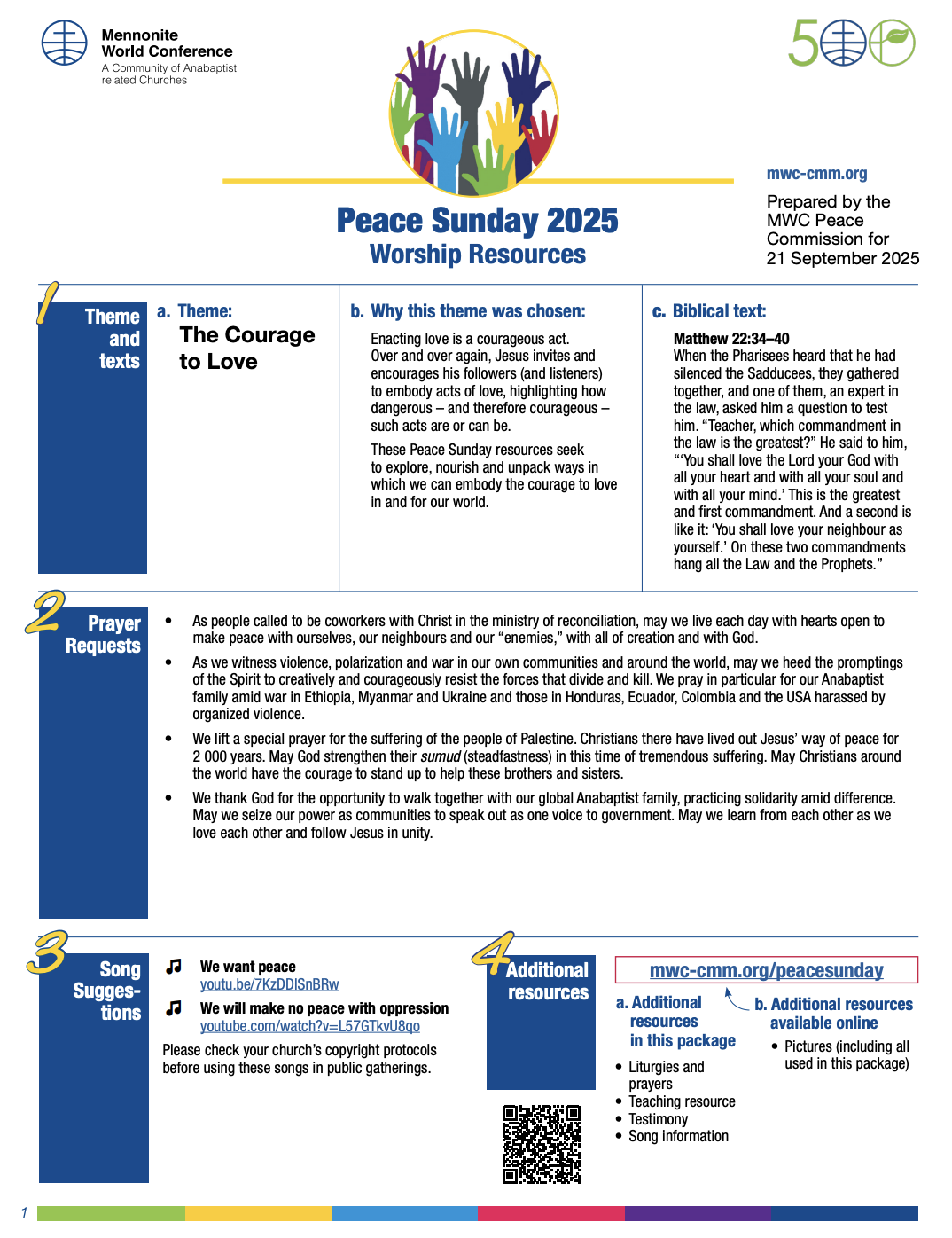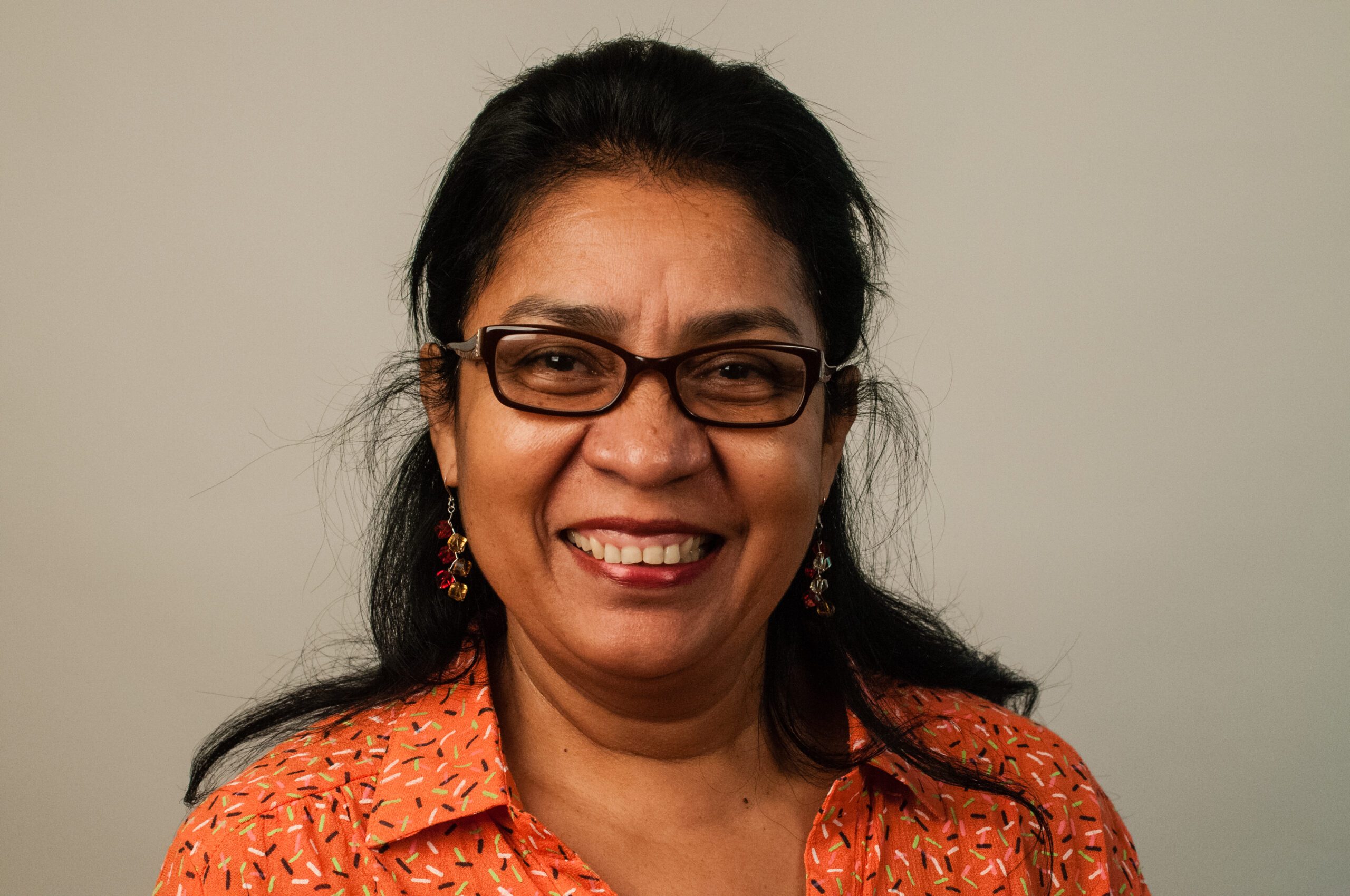-
What does it mean to be a Peace Church?
Peace Sunday 2025 – Testimony A story of the church in Myanmar What does it mean to be a Historic Peace Church – or, rather, a church dedicated to the ways of Christ’s peace? This is the question that the Mennonite church in Myanmar wrestles with as the ongoing conflict there continues to affect many…
-
Redrawing our relationships of proximity
Peace Sunday 2025 – Teaching Resource Sermon on Matthew 22:34–40 “Vecino” or “vecina” (neighbour). This is one of the ways we refer to the different people around us in Bogota, Colombia, whether they live in our building, the house next door, or we meet them in a store or other shared and public places. We…
-
Peace Sunday 2025 – Activities
Who is our neighbour? What is the gospel? Enact “Samarital Acts” (Luke 10:25-37) in the community OR Explore the meaning of “gospel” in the story and notice the different practical ways in which it is embodied in Luke 4. 1. Create multi-generational groups to explore the assignment together over four weeks. 2. Within the groups,…
-
Peace Sunday 2025 – Prayers and Liturgies
Prayers and Liturgies A litany for the moment Responsive reading: one voice for the regular text, all voices for the bold text. All voices join on bold and italic text. God of surprising birth You are not the saviour we expect, Your power does not look like the power We want our God to demonstrate. We wait. We…
-
Peace Sunday 2025 – Song Information
We want peace “We Want Peace” isn’t just a song title. It’s a call. A prayer. And a mission. We wrote this song because we don’t believe that violence can be the solution to our problems. “War is Contrary to the Will of God”, wrote the World Council of Churches in 1948 after the end…
-
Peace Sunday 2025 – worship resource
Theme The Courage to Love Why this theme was chosen Enacting love is a courageous act.Over and over again, Jesus invites and encourages his followers (and listeners) to embody acts of love, highlighting how dangerous – and therefore courageous – such acts are or can be.These Peace Sunday resources seek to explore, nourish and unpack…
-
We want peace song information
Music & Lyrics: Dennis Thielmann © 2021 / French translation: Marie-Noëlle YoderArr: Dennis Thielmann & Karin Franz © 2025www.songsofpeace.ch Permission granted to MWC member churches for congregational use for Peace Sunday and Anabaptist World Fellowship Sunday. For permissions for ongoing use or in larger group gatherings, see www.songsofpeace.ch/songs/wewantpeace or contact info@songsofpeace.ch
-
You’re Not Alone
*Page with music notation are taken from the forthcoming Voices Together worship and song collection, published by MennoMedia. Used with permission. Permission granted to MWC member churches for congregational use for Peace Sunday and Anabaptist World Fellowship Sunday. For permissions for ongoing use or in larger group gatherings, please contact info@smalltallministries.com. Included here You’re Not…
-
Peace Sunday 2024 – worship resource
Theme Kintsukuroi: The broken vessel is often more beautiful than the original Why this theme was chosen 2 Corinthians 4:7 describes the gospel as a “treasure” in “clay jars.” These humble vessels bring to mind the Japanese tradition of kintsukuroi that creates (or recreates) pottery from broken pieces. Damaged vessels are put back together, often…
-
Peace Sunday 2021 – Activities
Boat in the midst of the storm Have a large backdrop painted blue (blue sea and sky). Create a boat cut-out to place on the “sea” backdrop. Provide blue paper “wave” cut-outs. (Ensure colour is not too dark to see the writing on it.) Ask congregants to write on the “waves”: what issues or realities…
-
Peace Sunday 2021 – Teaching resource
Finding Healing and Hope in Crisis Jesus walks on water (Matthew 14:22-33) and Jesus calms the storm (Matthew 8:23-27; Mark 4:35-41). You can imagine Jesus walking on top of the turbulent water thrashing against the boat, or the storm-high waves covering the boat, and understand the fear the disciples must have felt – to the…
